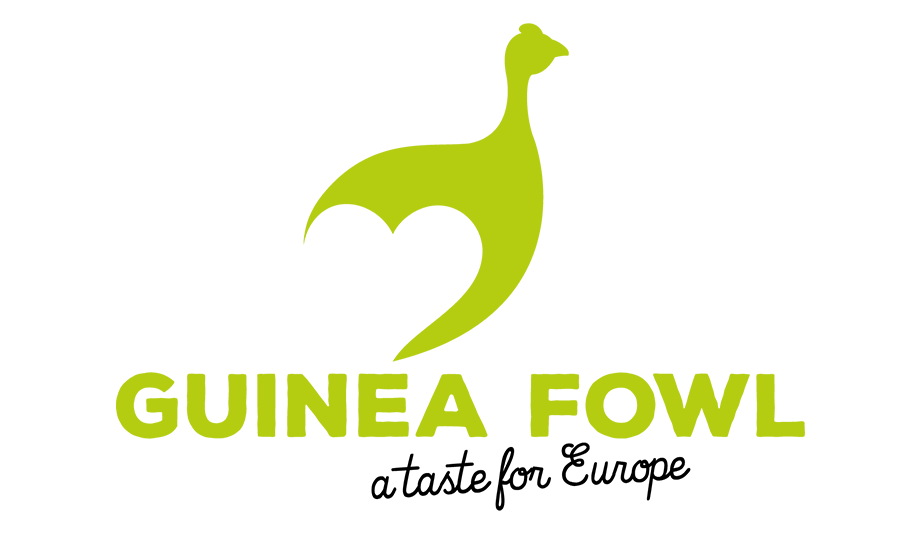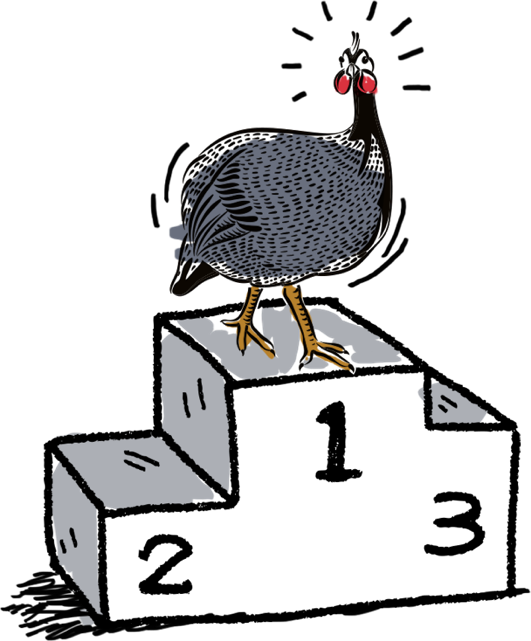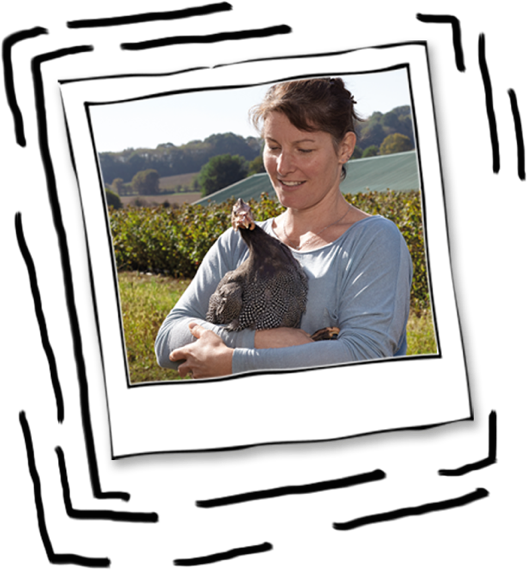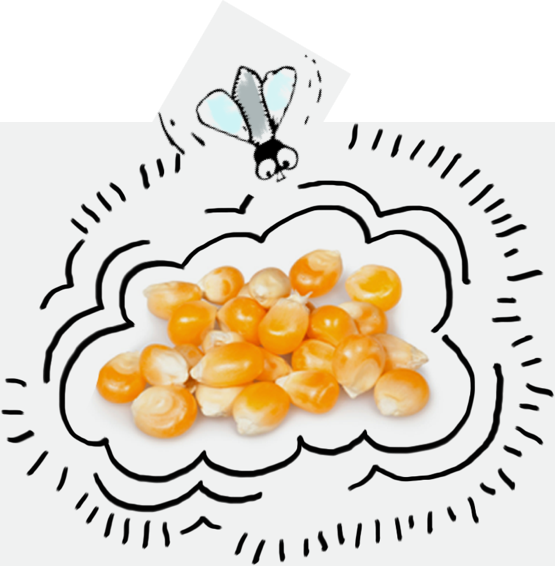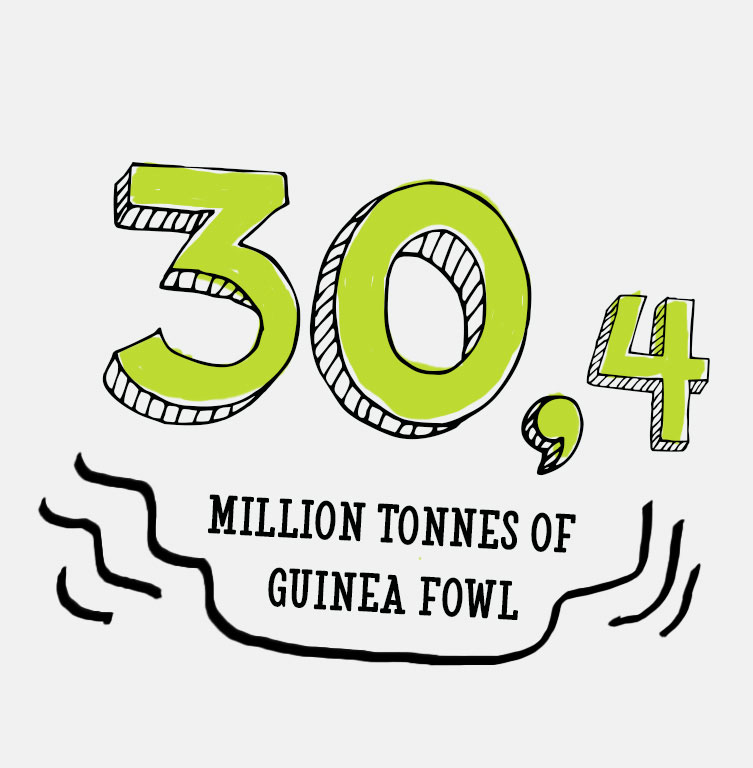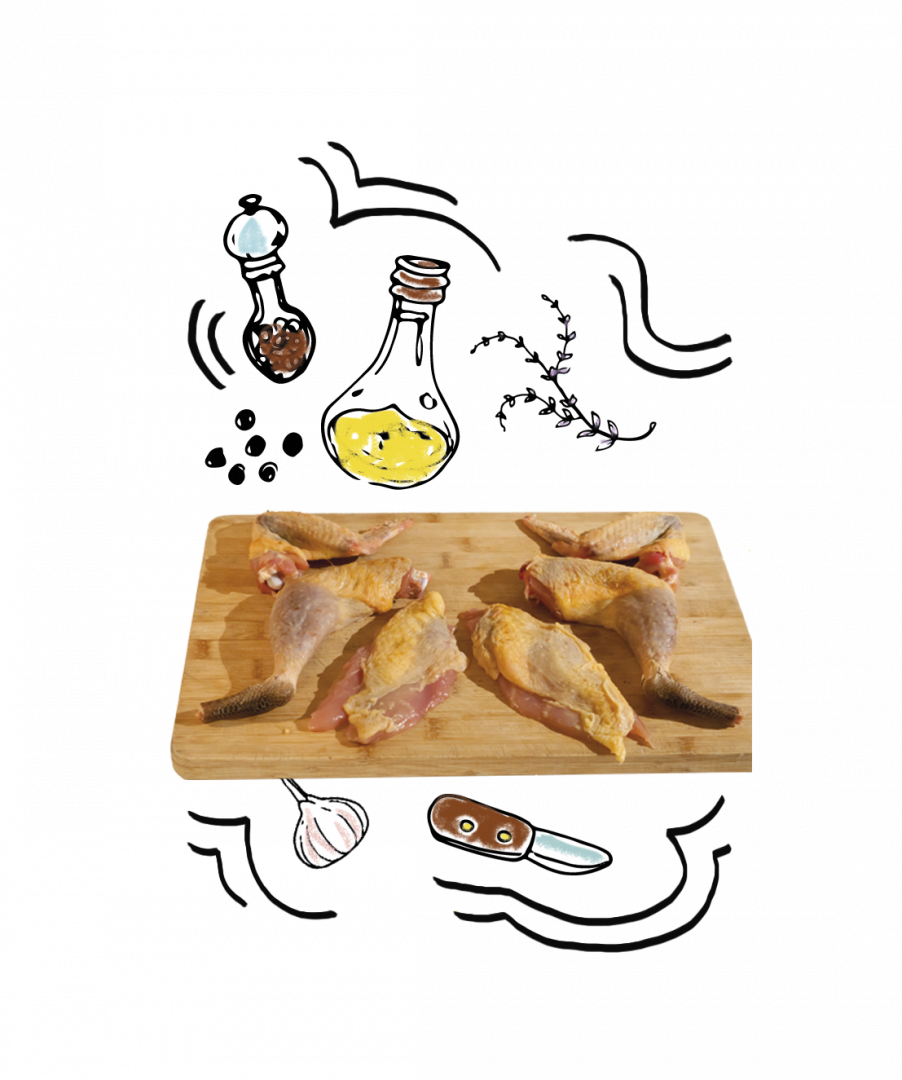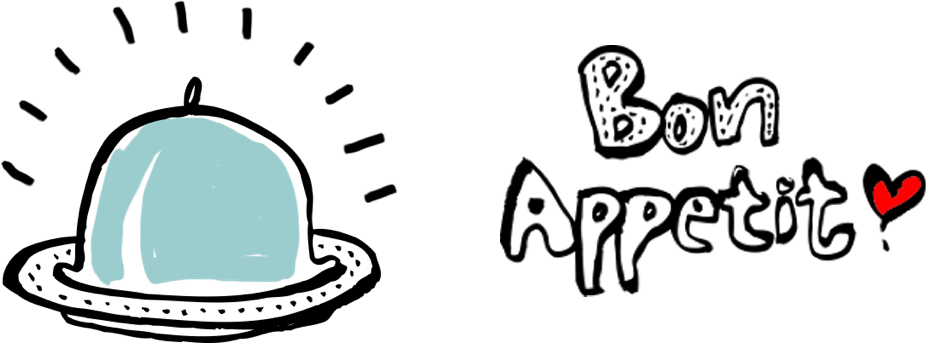WHICH CAME FIRST, THE GUINEA FOWL
or the egg
Hatching
We won’t waste time arguing whether it was the guinea fowl or the egg that came first, but we would hazard that it was the egg, because a lot of things start with the egg in our experience.
European hatcheries (five in France - one of which in La Réunion - and two in Italy) export both keets to be raised in the client’s country and eggs to be incubated by the client. These products are exported to other European countries (Belgium and Poland, but also Romania, Hungary and French overseas departments and territories), and also to Africa for third countries. Hungary, for example, also has a hatchery set up for incubating and hatching guinea fowl eggs.
In France, there are five companies that produce and incubate guinea fowl eggs for hatching. The annual production of eggs for hatching is a little under 50 million, of which 1.7 million were exported in 2017. After incubation and hatching, 31 million keets were installed over the year at a thousand poultry farms in France, and 1.3 million were exported to be reared in other European countries.
Whatever type of production the keets are destined for, they are installed at farms where the ambient temperature is around 34°C, on ground covered with natural litter, and where they have access to clean water and feed suitable for their dietary requirements, consisting of plant-based raw materials, vitamins and minerals.
[KEY FIGURES - FRANCE]
48,7 million eggs for hatching in 2017
31 million guinea fowl eggs hatched in 2017
1,7 million eggs for hatching exported in 2017
1,3 million keets exported in 2017


